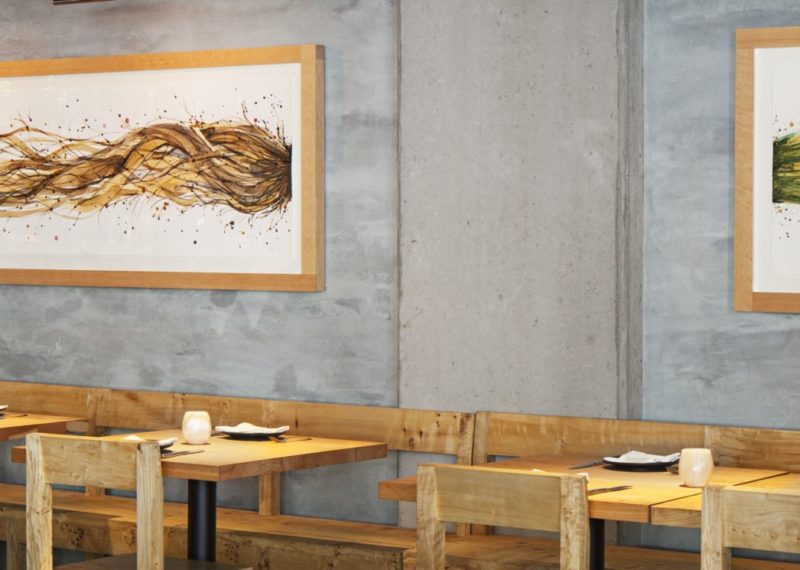Unlike many other trappings of consumer society, food is necessary for survival. Food is also cultural, and every year, cooks and chefs come up with new ways to make food tastier, healthier or more exciting in some way. Innovators are always finding ways to solve problems and beat challenges, from using secret ingredients to keeping costs down. Restaurants based on all sorts of wacky concepts come and go to keep up with changing tastes.
In this day and age, climate change is a big problem. Food production and waste are major contributors to global greenhouse gas emissions. Growing, raising, harvesting, transporting, storing, cooking, serving and disposing are all energy- and labor-intensive. Despite the inherent challenges, some chefs argue that restaurants can also be part of the solution. A few innovative chefs and restaurant owners are giving it a go and showing that it can be done.
Let’s start with Perennial. Owners Karen Leibowitz and Anthony Myint started from scratch with the concept of a carbon negative restaurant and ran from there.
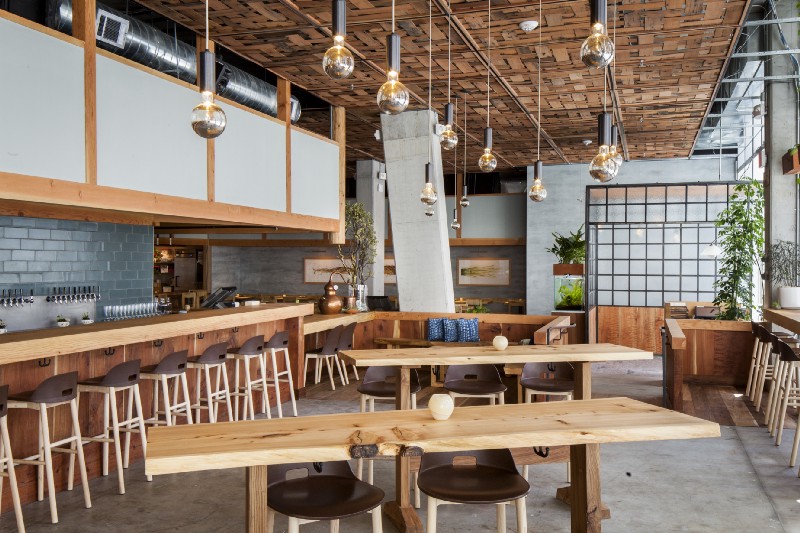
The couple already owned the successful Mission Chinese in San Francisco. “In 2012, we had a child, and that really focused our minds on the future,” Liebowitz said. “We had a person we were pledged to take care of and we worried about her future.” She and Myint assessed Mission Chinese’s carbon footprint and implemented some changes. “We were clearly just retrofitting an existing structure,” Liebowitz said. So they began to imagine starting something new.
Perennial serves “California cuisine,” and while some dishes include unusual ingredients, Leibowitz says they have to be delicious to make it onto the menu. Their approach is designed to reduce food waste by using parts of ingredients that others might discard. This is called “root to stem” vegetable cooking. “This leads to a lot of creativity,” she said.
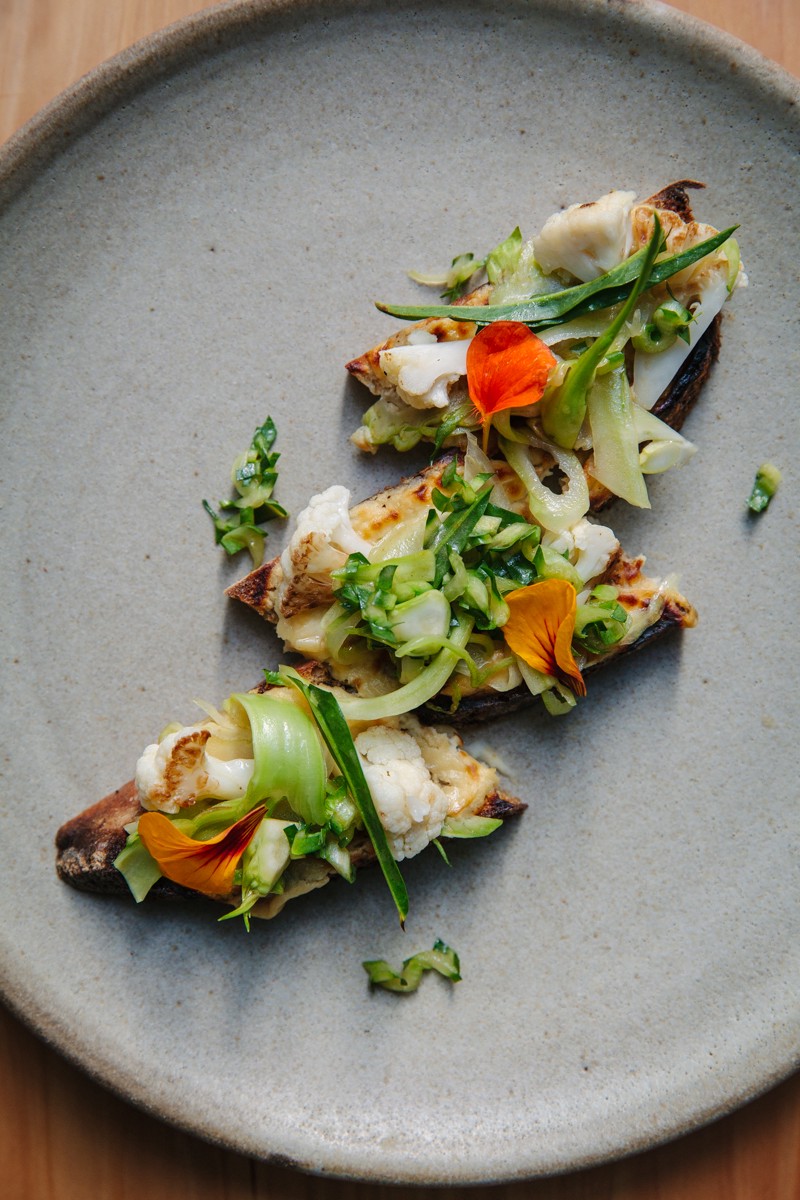
Meat comes from places that employ “carbon ranching,” or raising the animals in such a way that it benefits the climate. When they buy an animal, they use the whole animal by strategically placing certain cuts throughout the menu. There’s very little waste and very little compromise in terms of taste.
Perennial’s menu features Kernza, a perennial grain developed in Kansas. Kernza can be baked into traditionally popular San Francisco sourdough breads. “People go bonkers for it,” Liebowitz said. They serve the bread with butter and make toasts with seasonal vegetables.
Liebowitz says that environmental groups will often opt to host events at Perennial, but most diners come for the beautiful space and delicious food. Despite climate change serving as the inspiration, the dining experience is similar to any high-end restaurant. While there is little literature on the menu, patrons can ask servers about the climate-focused movements.
“We get a full range,” she explained. “Sometimes we get people from as far away as Australia to see what we’re doing.” Perennial is the first “climate” restaurant in the United States, but many chefs and owners are devout participants in the sustainable food movement, which includes many strategies for reducing carbon footprints.
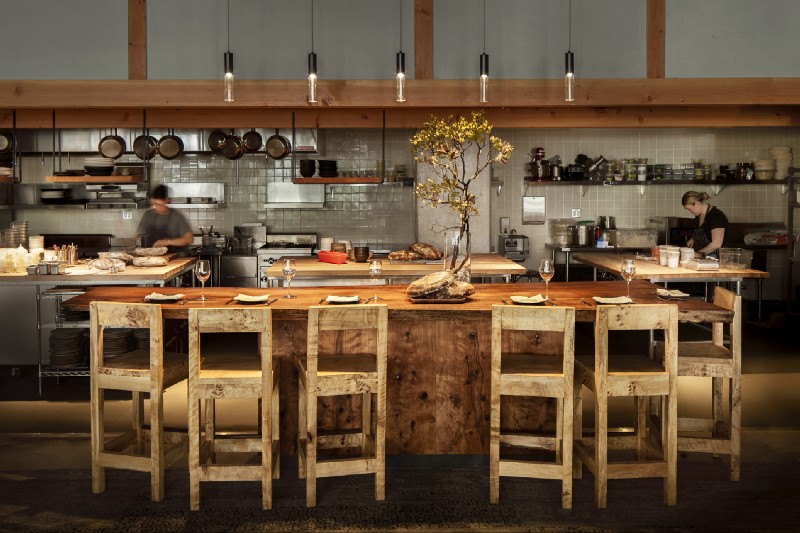
The widely popular “farm to table” approach emphasizes the relationship between food production and consumption. It’s evident in high-end dining and food truck start-ups, which proudly list the sources for each individual ingredient.
There are obvious climate co-benefits to this at every stage. Organically produced food doesn’t rely on fossil fuel-based production methods or degrade soils, local food does not use as much fuel in transportation and seasonal produce does not require long-term storage or greenhouses.
Chef Andrea Reusing, owner of Lantern Restaurant in Chapel Hill, North Carolina partners with the Center for Environmental Farming Systems to advocate for policy changes. She focuses on buying local meat, seafood, and produce, composting food waste, and recycling cooking oil. “We don’t really advertise what we do behind the scenes to reduce waste and be responsible consumers,” Lydia Campbell, a Lantern employee said.
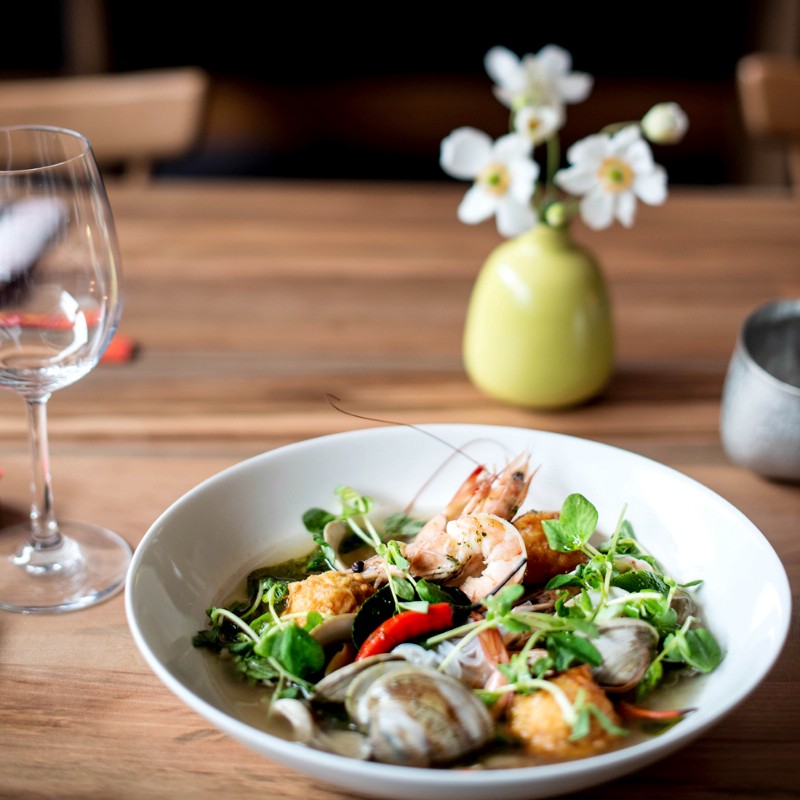
Reusing doesn’t really think its a specific selling point beyond a general sense that our guests have that we care about local food systems, keeping a small footprint, and minimizing waste. “Our clientele is definitely concerned about what’s happening to our Earth,” Campbell said.
A group of French restaurants partake in “Bon pour le climat,” a movement that strives to drive down emissions by composing menus of lower-impact dishes an implementing strategies to reduce waste. Chef François Pasteau of l’Epi Dupin in Paris labels climate-friendly dishes. It encourages chefs to use every part of every ingredient, by incorporating traditional “waste” products creatively.
Putting vegetables first is a big part of the climate friendly movement. In many western cultures, meat dishes are traditionally considered entrées, while vegetables are seen as sides. Meanwhile, Silo is the U.K.’s first zero-waste restaurant. Founder Douglas McMaste designed it to showcase this, with a giant composter in the entrance.
While Silo does mill its own grain, brew its beer and serve drinks in jam jars, among other conservation measures, McMaste’s main strategy to limit waste is to limit the choices. There are only six items on the menu at a given time. This means that he only has to purchase ingredients for these options, rather than having everything on hand to make 40 diverse dishes.
Restaurants are showing what can be done, while serving healthy, quality, delicious dishes. Their leadership and innovation may change the world.
Laura A. Shepard writes for Nexus Media, a syndicated newswire covering climate, energy, policy, art and culture. You can follow her at @LAShepard221.

